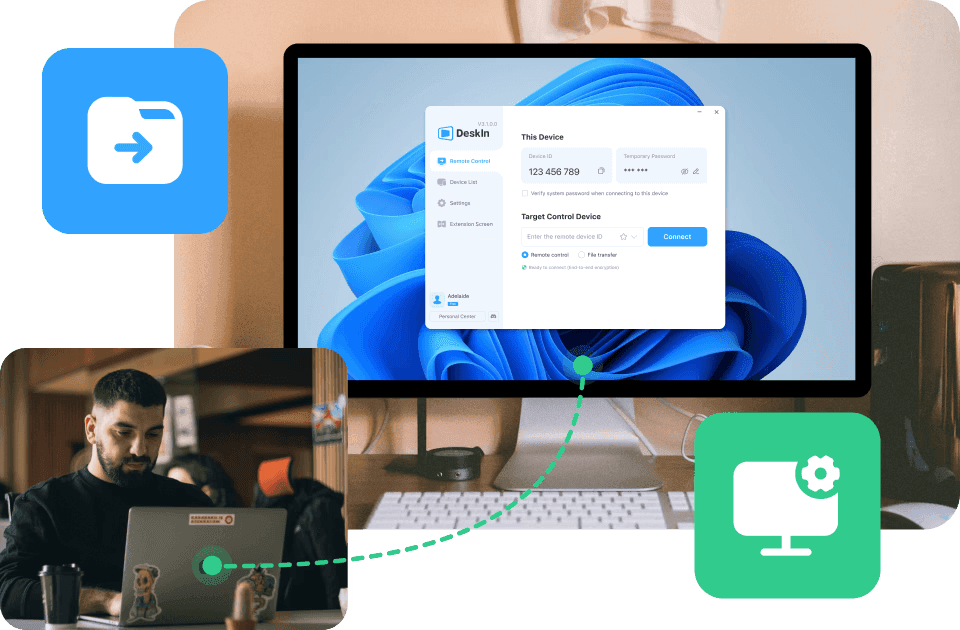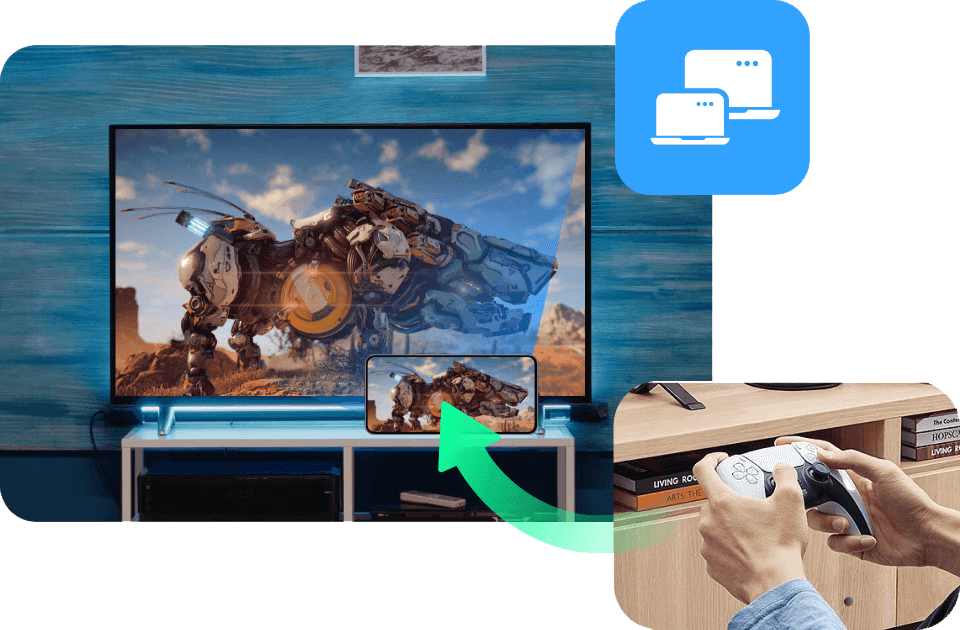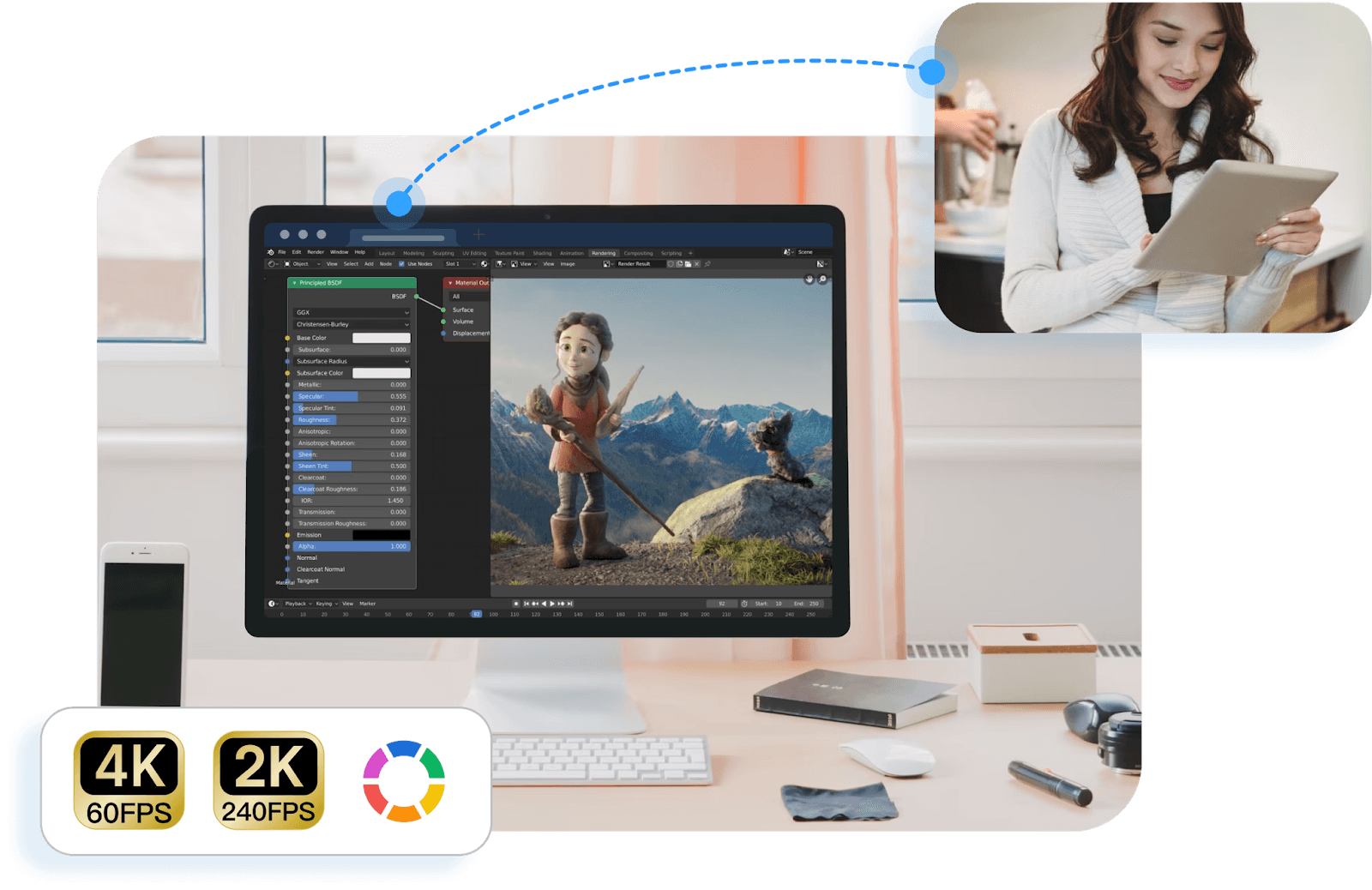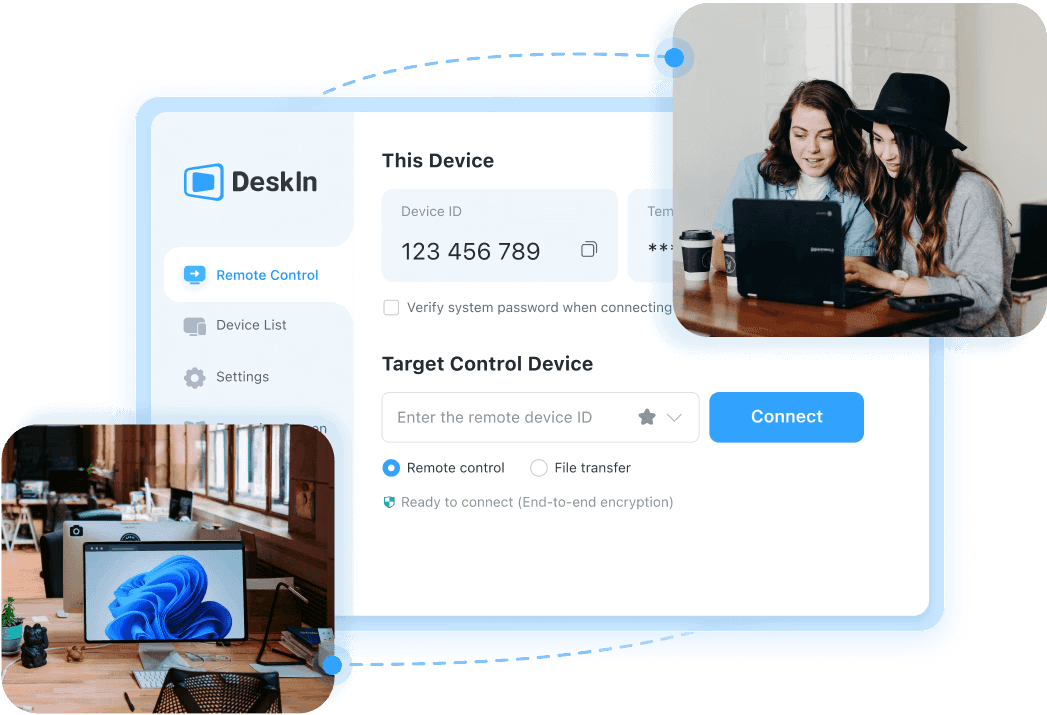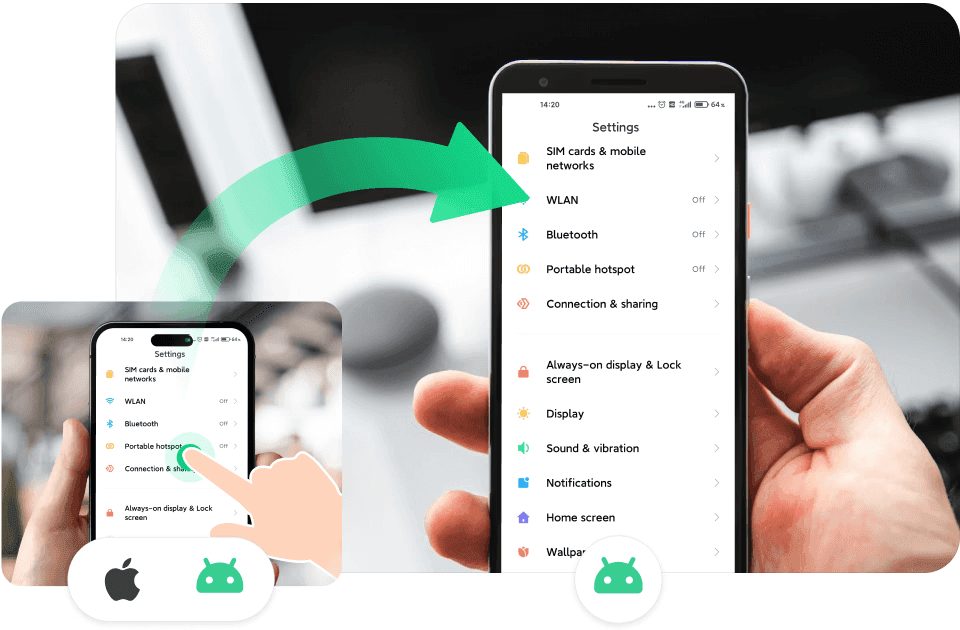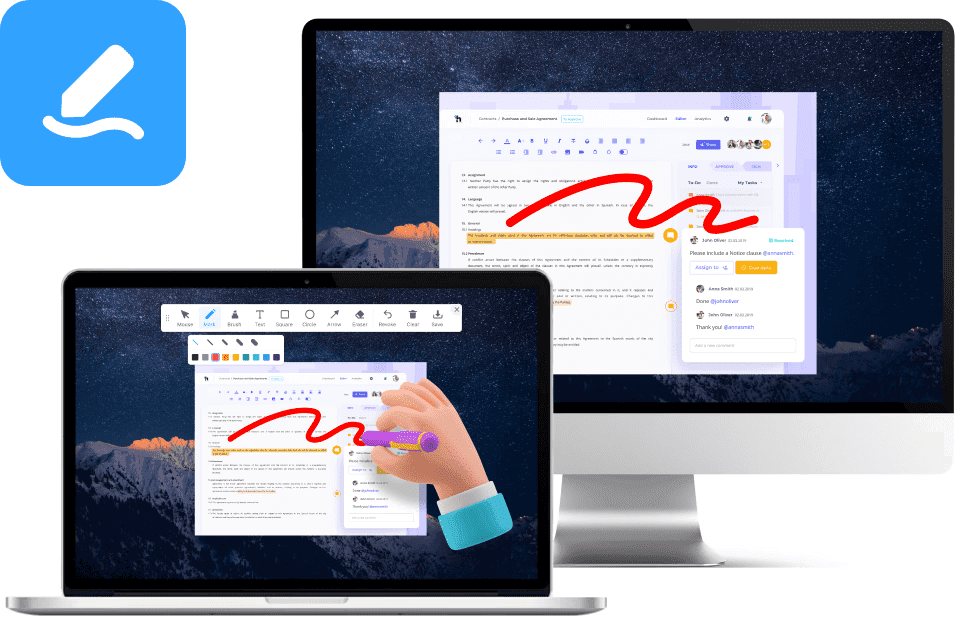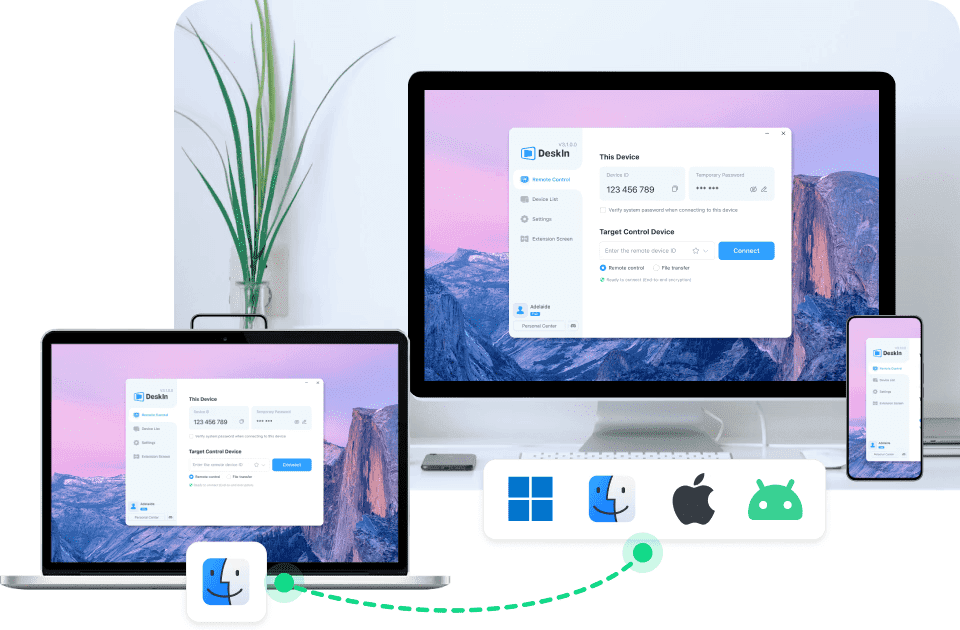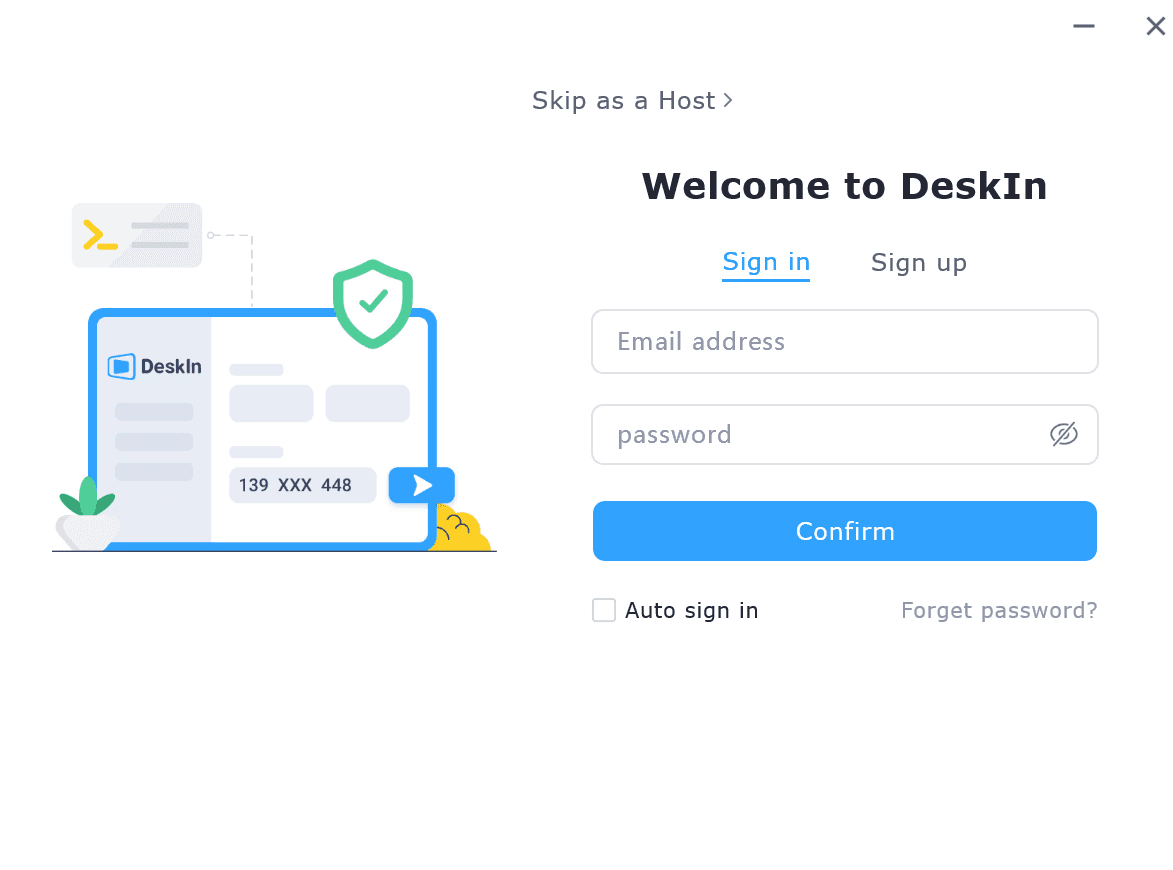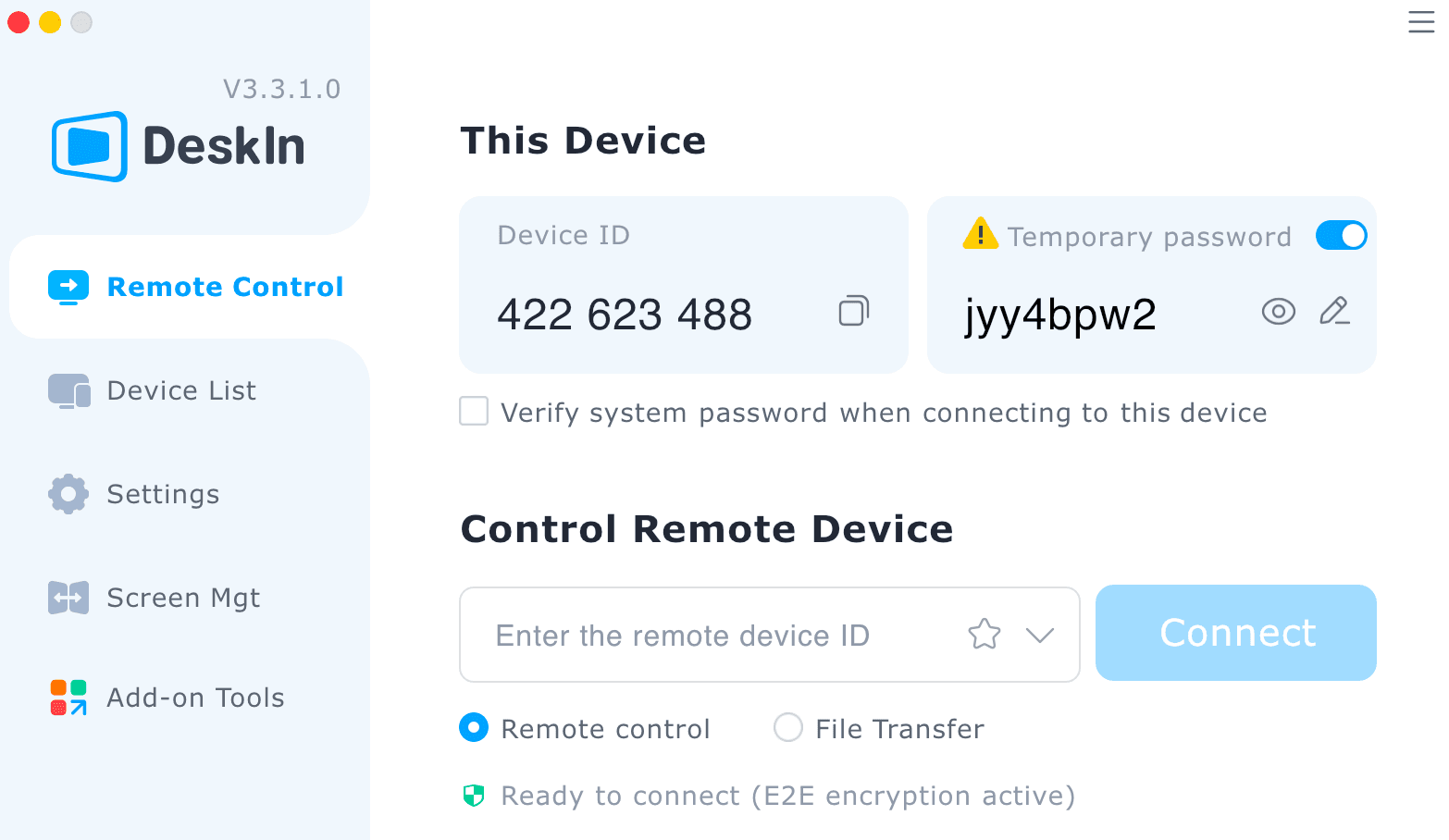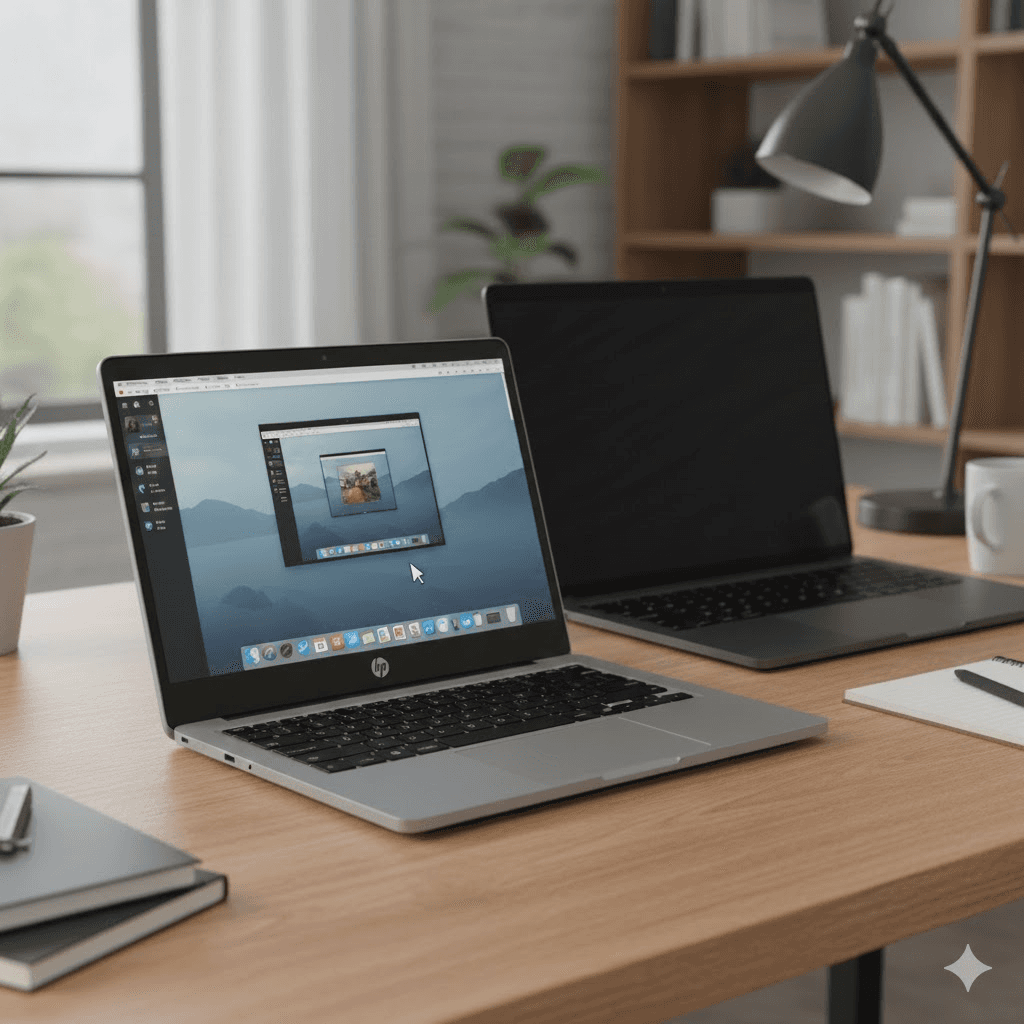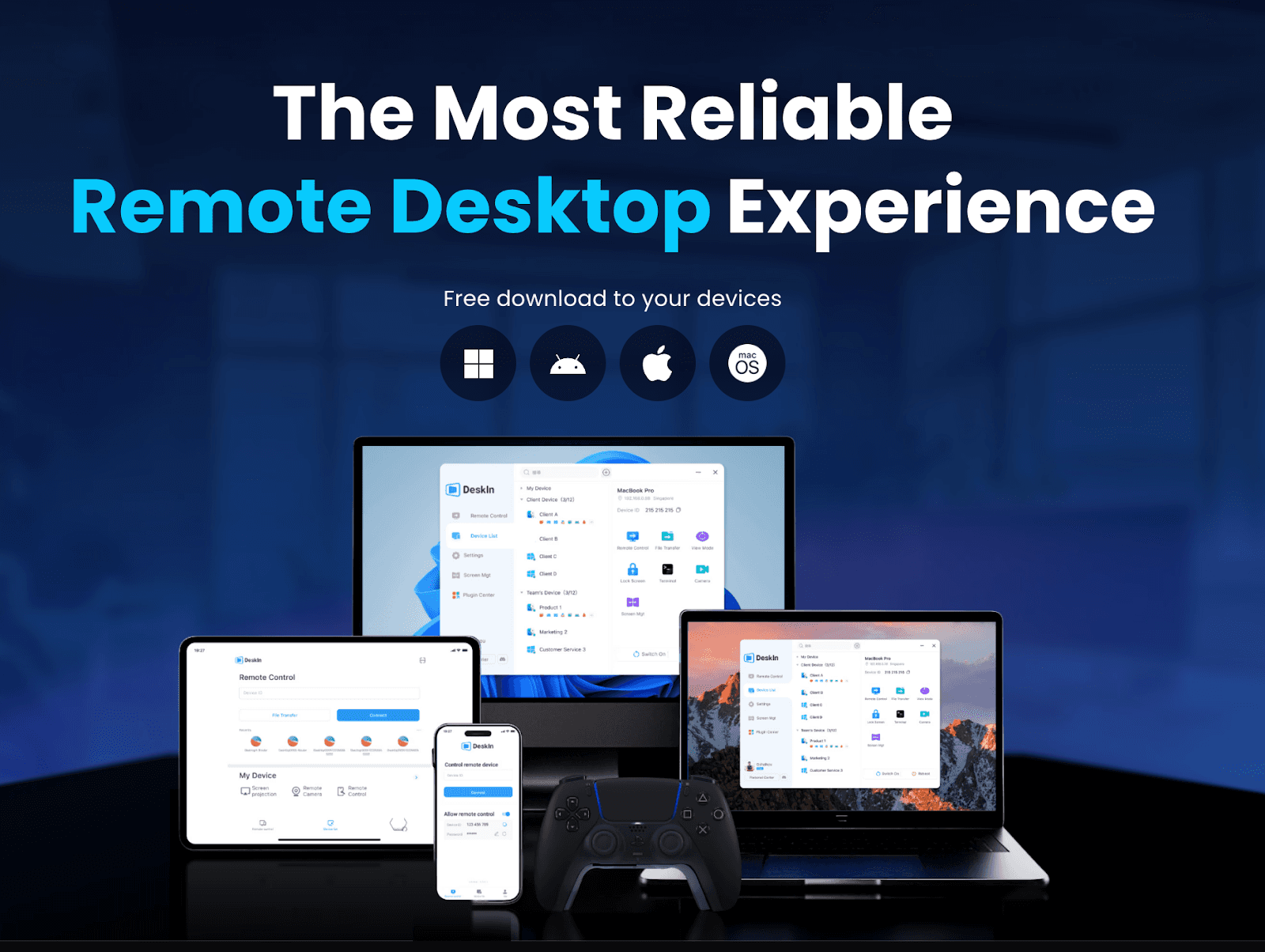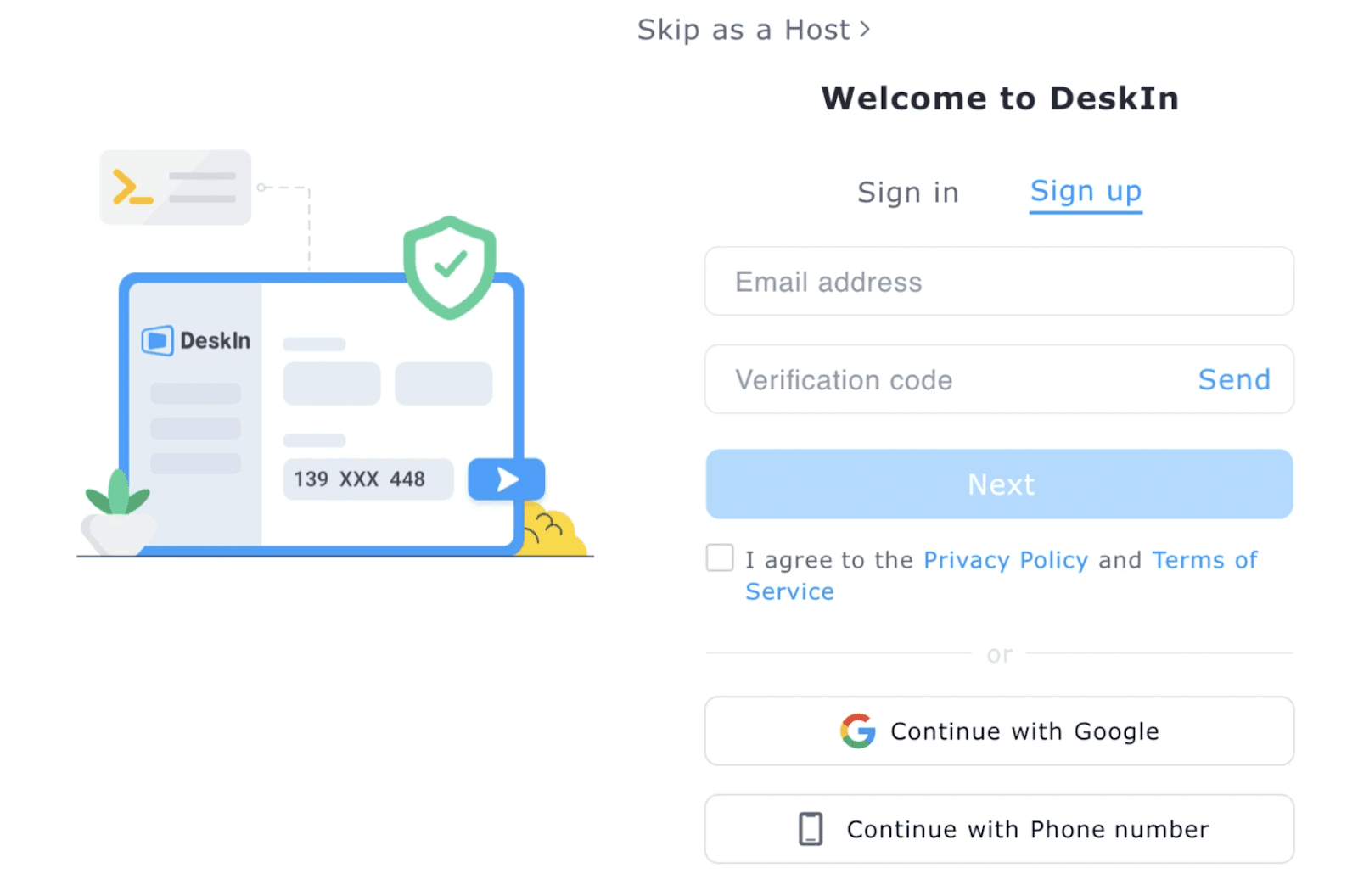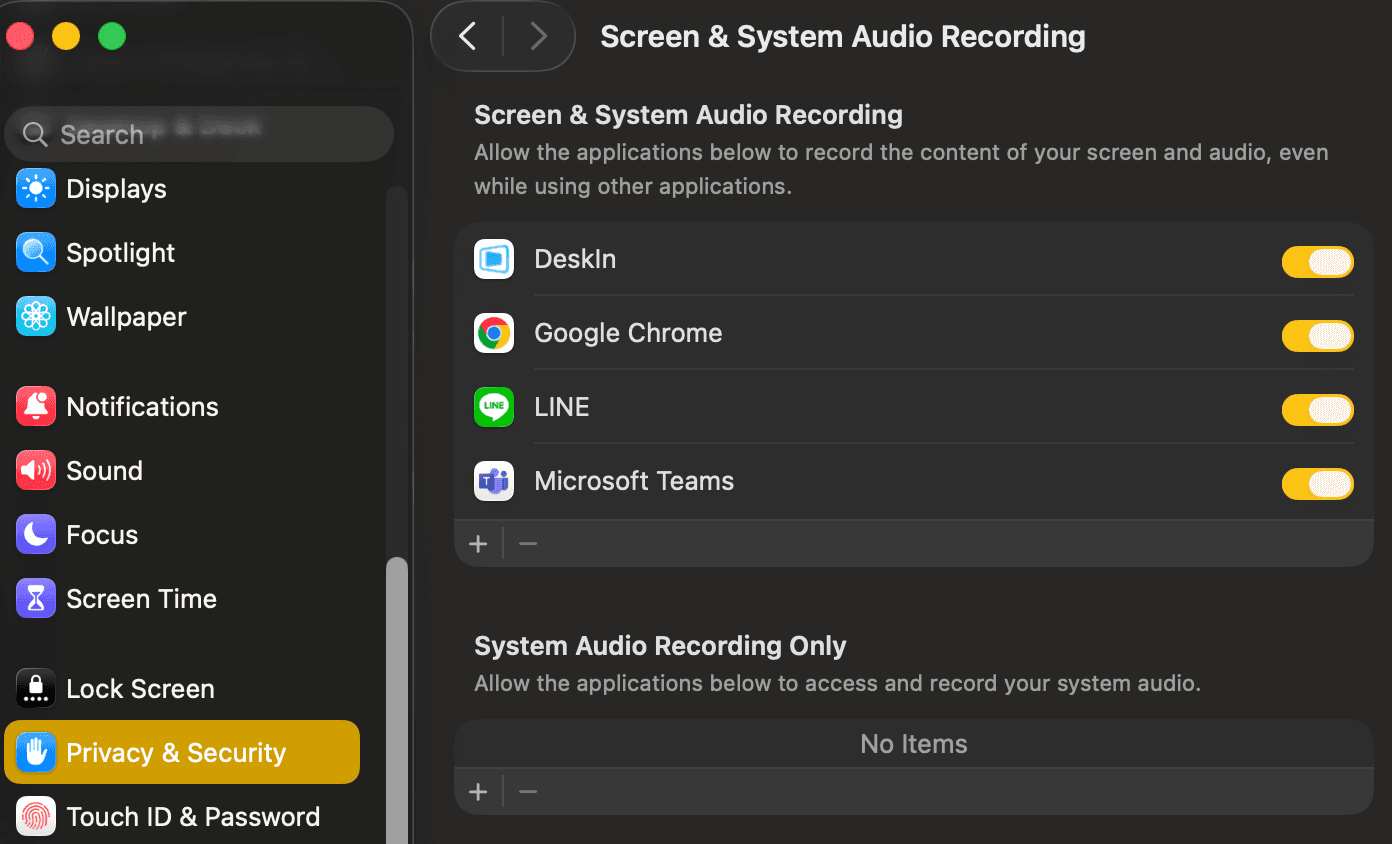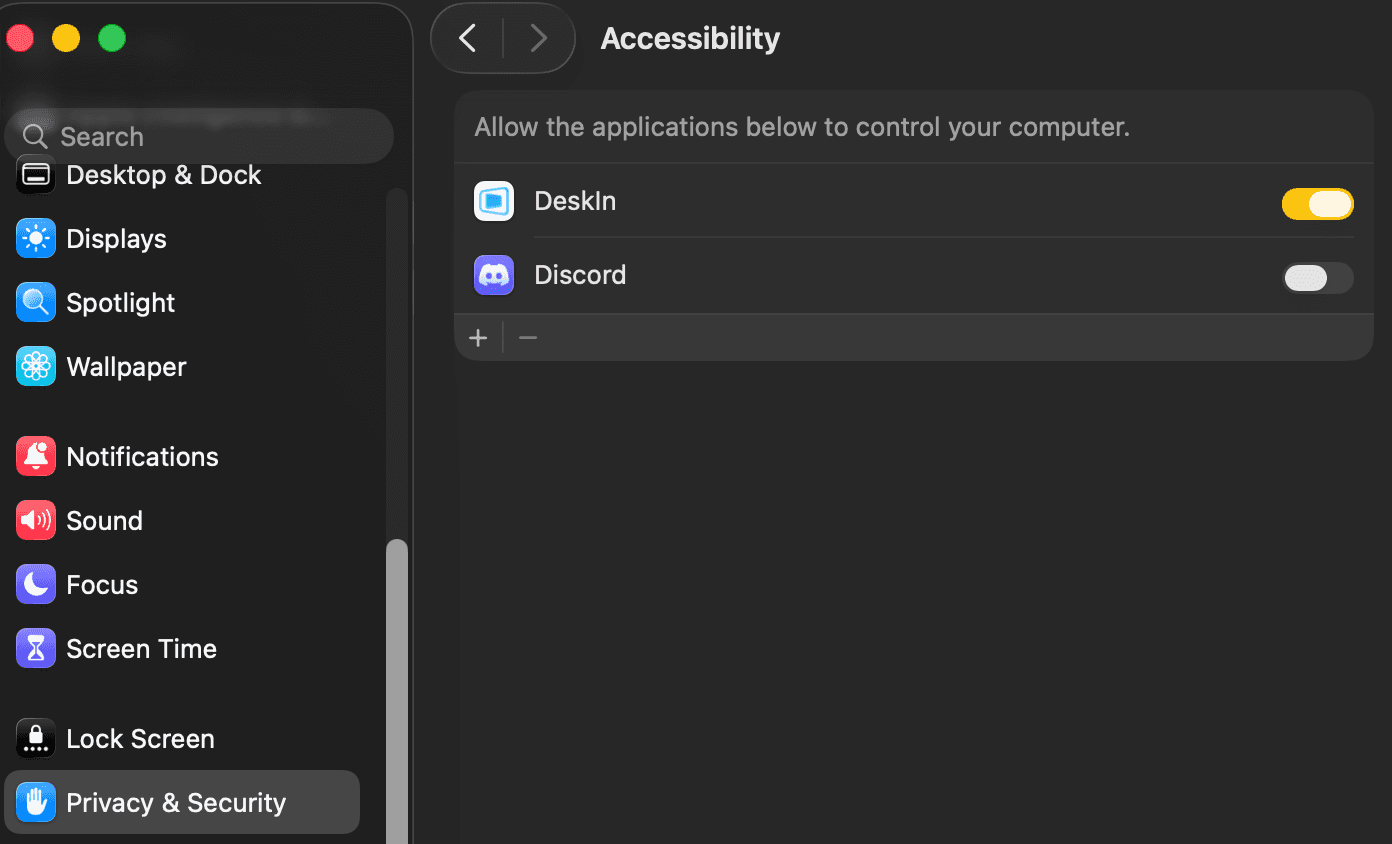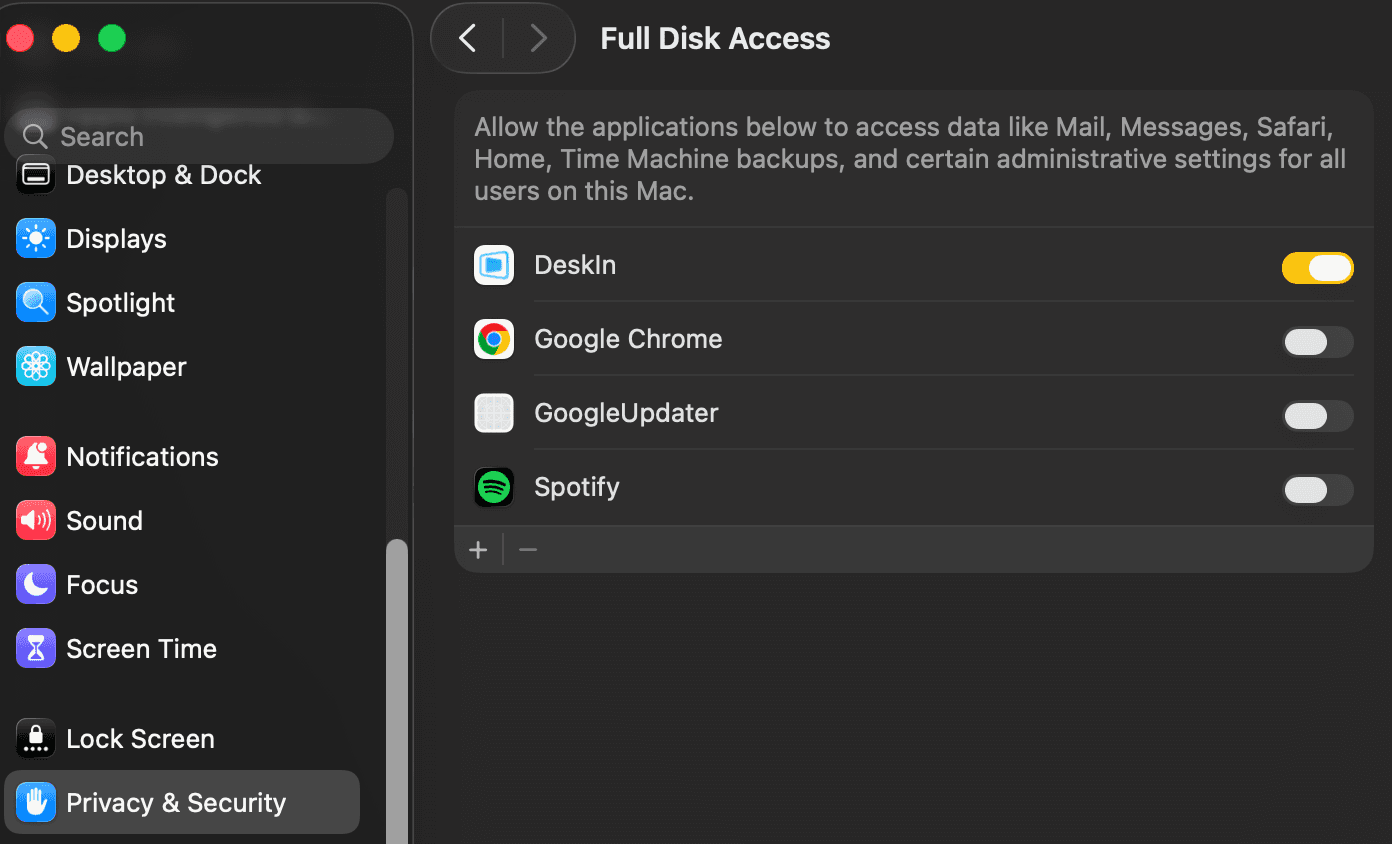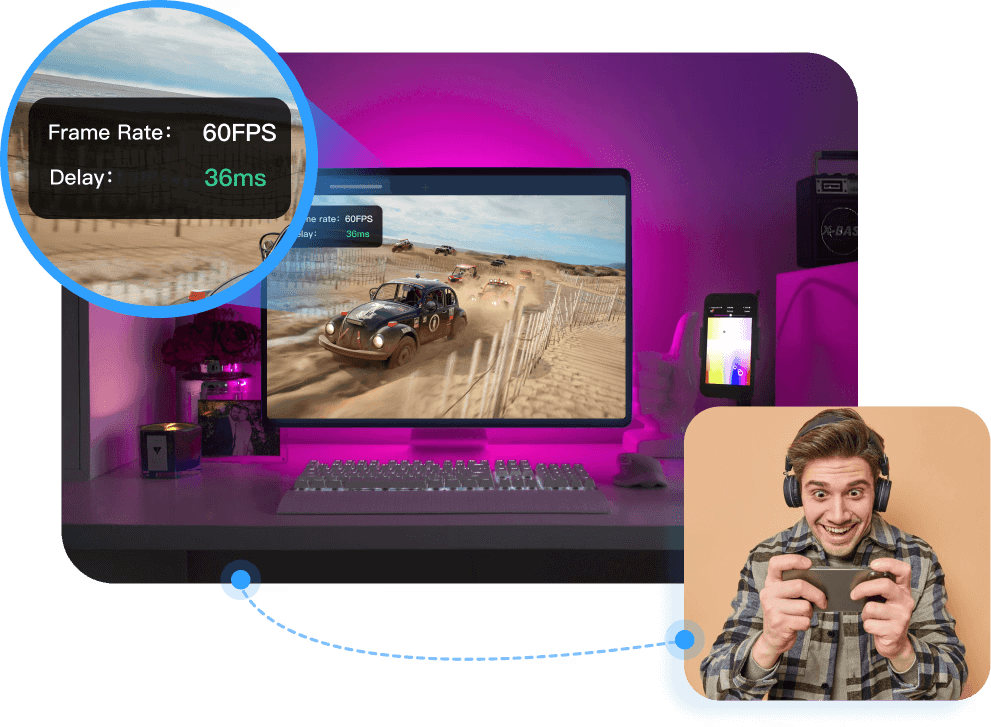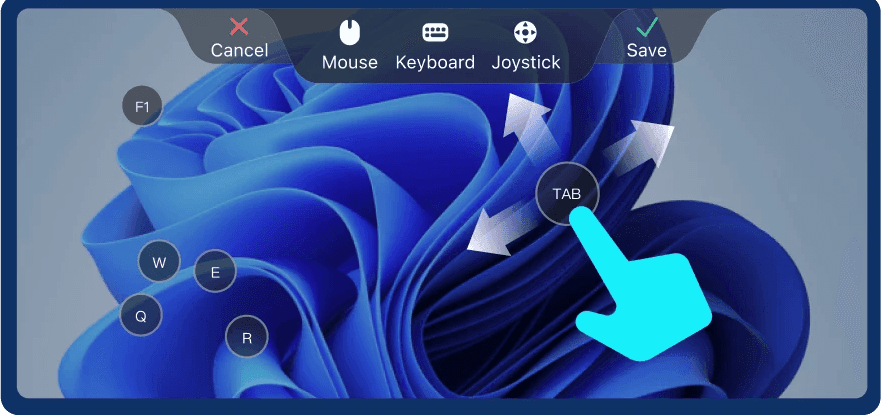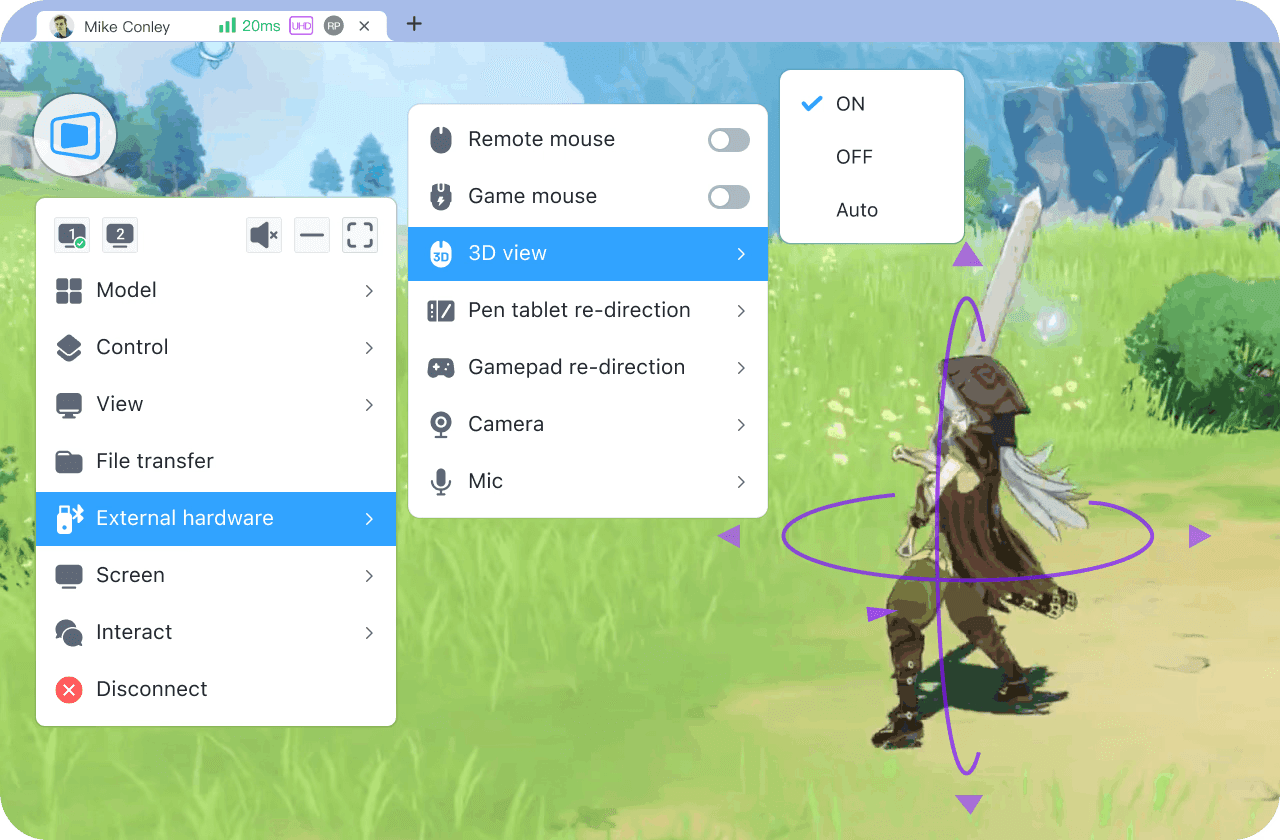Using a laptop as a second monitor can significantly boost productivity when working with multiple tasks or enhance gaming experiences with extended views. It's also a great way to reuse your old laptop instead of letting it collect dust.
If both your devices run the same OS (Windows to Windows or macOS to macOS), setting this up is usually straightforward. If you're going to do cross-platform connections (Windows to Mac or vice versa), you need to seek help from third-party software.
This guide explores 3 effective methods to turn your laptop into a second monitor, including built-in solutions for same-OS setups and reliable third-party tools for cross-platform connections. Keep reading to find the best approach for your needs.
📚 Related Reading:
1. How to Use a Second Laptop as a Second Monitor (Windows/macOS)
If you need to connect devices running different operating systems, like using a Windows laptop as a second monitor for a Mac, third-party remote desktop software is the most reliable solution. DeskIn is a powerful yet user-friendly option that simplifies cross-platform screen sharing. Unlike built-in tools limited to the same OS, DeskIn supports seamless connections between Windows, macOS, iOS, and Android. You only need to scan a QR code or select your device to establish a wireless link.

With 4K resolution and ultra-low latency (<40ms), DeskIn ensures smooth visuals for extending the workspace or mirroring a screen for presentations. Gamers will appreciate the real-time responsiveness, eliminating lag during competitive play. DeskIn also applies 256-bit encryption to keep your data protected, making it an ideal option for remote work or transferring files over a remote desktop.
🎼 Explore more ...
Cross-platform compatibility – Connect Windows, macOS, iOS, and Android devices effortlessly.
One-click wireless setup – Easy wireless setup with one tap.
4K high-resolution streaming – Sharp visuals for work or entertainment.
Low latency (<40ms) – Smooth performance for gaming and real-time tasks.
Military-grade encryption – Secure remote access for sensitive workflows. DeskIn is the best secure remote desktop.
Multi-scenario support – Extend, mirror, or share screens for office, gaming, or remote support.
It's easy to get started with DeskIn. With a single tap, you can wirelessly use your laptop as a second monitor. Here's how.
Step 1. Download and Install DeskIn
Go to the official DeskIn site on both laptops. Download the right version for each one, then follow the steps to install it.

Step 2. Log in to Your DeskIn Account
Launch DeskIn on both computers, then log in to the same DeskIn account. If you're new to DeskIn, simply create an account and log in.
Step 3. Use a Laptop as a Second Monitor
On your main computer (the one sending the screen), lead to "Screen Mgt". Choose "Extend My Screen" under "Mirror/Extend the Screen to Other Devices". After that, select the laptop as second monitor from the list. Then click "Start Extending".

👀 You might also want to know:
2. How to Use Another Windows Laptop as Second Monitor (Windows Only)
If you are using Windows 11 (version 22H2 or later), you can utilize the built-in Wireless Display feature. It's a free solution to wirelessly use another Windows laptop as a second monitor. To try it out, just make sure both your Windows computers are connected to the same Wi-Fi network. Then follow the steps below.
On the laptop you want to use as a second screen (the receiver):
Open "Settings", then go to "System" > "Projecting to this PC".
If prompted, click "Optional features" and select "Add a feature".
Search for "Wireless Display" and install it.
Once installed, return to "Projecting to this PC" and set it as follows. Then keep this laptop open and on the "Projecting to this PC" page.

On the main PC (the one sending the screen):
Press "Windows + K". Or go to "Settings" > "Display" > "Multiple displays" > "Connect to a wireless display".
Wait for your other laptop to show up in the list.
Click on it to connect.
After the connection is made, press Windows + P to choose how you want to use the screen:
Duplicate (same screen on both)
Extend (use as an additional monitor)
Second screen only (show only on the second screen)
3. How to Use a Mac Laptop as Second Monitor (MacOS Only)
macOS computers offer a built-in AirPlay functionality, allowing you to wirelessly use a Mac laptop to another Mac. This works great for creative workflows, presentations, or simply expanding your workspace. Just note that performance depends on your network stability.
There are three key requirements:
Both Macs must run macOS Monterey or newer
Both devices need an active internet connection
You must be signed in to the same Apple ID on both computers
If you meet the requirements, simply follow the 2 methods below.
Way 1. On you main Mac computer (the one sending the screen). Go to the menu bar, click the "Control Center" and choose "Screen Mirroring". When the Mac laptop as the second monitor appears on the list, simply choose the option to make the connection.

Way 2. Open the Apple menu on your main Mac computer. Choose "Displays" > "Add Display". Then a list will pop up. Just choose your target Mac computer to connect to.

FAQs About Using Laptop as Second Monitor
How to connect laptop as second monitor using HDMI?
Unfortunately, you can't just connect a laptop as a second monitor using an HDMI cable. That's because most laptops only have HDMI output ports. It would need an HDMI input port to use a second laptop as a second monitor. Alternatively, you can rely on third-party software like DeskIn or any built-in features your operating system might offer.

Can I use laptop as second monitor with USB-C?
Not directly. Most laptops don't support video input over USB-C. So you can't directly plug another device into your laptop's USB-C port to use it as a second monitor. However, you can try alternative methods, like using third-party software solutions or appropriate hardware adapters.
Conclusion
Using a laptop as a second monitor is possible, but the best method depends on your needs. For Windows 11 users, the built-in Wireless Display feature offers convenience, while Mac users can rely on AirPlay for seamless Apple ecosystem integration. If you need better performance or cross-platform support, third-party tools like DeskIn provide flexible, high-quality streaming with low latency. Why not try the method that fits your needs today and boost your productivity instantly?

Using a laptop as a second monitor can significantly boost productivity when working with multiple tasks or enhance gaming experiences with extended views. It's also a great way to reuse your old laptop instead of letting it collect dust.
If both your devices run the same OS (Windows to Windows or macOS to macOS), setting this up is usually straightforward. If you're going to do cross-platform connections (Windows to Mac or vice versa), you need to seek help from third-party software.
This guide explores 3 effective methods to turn your laptop into a second monitor, including built-in solutions for same-OS setups and reliable third-party tools for cross-platform connections. Keep reading to find the best approach for your needs.
📚 Related Reading:
1. How to Use a Second Laptop as a Second Monitor (Windows/macOS)
If you need to connect devices running different operating systems, like using a Windows laptop as a second monitor for a Mac, third-party remote desktop software is the most reliable solution. DeskIn is a powerful yet user-friendly option that simplifies cross-platform screen sharing. Unlike built-in tools limited to the same OS, DeskIn supports seamless connections between Windows, macOS, iOS, and Android. You only need to scan a QR code or select your device to establish a wireless link.

With 4K resolution and ultra-low latency (<40ms), DeskIn ensures smooth visuals for extending the workspace or mirroring a screen for presentations. Gamers will appreciate the real-time responsiveness, eliminating lag during competitive play. DeskIn also applies 256-bit encryption to keep your data protected, making it an ideal option for remote work or transferring files over a remote desktop.
🎼 Explore more ...
Cross-platform compatibility – Connect Windows, macOS, iOS, and Android devices effortlessly.
One-click wireless setup – Easy wireless setup with one tap.
4K high-resolution streaming – Sharp visuals for work or entertainment.
Low latency (<40ms) – Smooth performance for gaming and real-time tasks.
Military-grade encryption – Secure remote access for sensitive workflows. DeskIn is the best secure remote desktop.
Multi-scenario support – Extend, mirror, or share screens for office, gaming, or remote support.
It's easy to get started with DeskIn. With a single tap, you can wirelessly use your laptop as a second monitor. Here's how.
Step 1. Download and Install DeskIn
Go to the official DeskIn site on both laptops. Download the right version for each one, then follow the steps to install it.

Step 2. Log in to Your DeskIn Account
Launch DeskIn on both computers, then log in to the same DeskIn account. If you're new to DeskIn, simply create an account and log in.
Step 3. Use a Laptop as a Second Monitor
On your main computer (the one sending the screen), lead to "Screen Mgt". Choose "Extend My Screen" under "Mirror/Extend the Screen to Other Devices". After that, select the laptop as second monitor from the list. Then click "Start Extending".

👀 You might also want to know:
2. How to Use Another Windows Laptop as Second Monitor (Windows Only)
If you are using Windows 11 (version 22H2 or later), you can utilize the built-in Wireless Display feature. It's a free solution to wirelessly use another Windows laptop as a second monitor. To try it out, just make sure both your Windows computers are connected to the same Wi-Fi network. Then follow the steps below.
On the laptop you want to use as a second screen (the receiver):
Open "Settings", then go to "System" > "Projecting to this PC".
If prompted, click "Optional features" and select "Add a feature".
Search for "Wireless Display" and install it.
Once installed, return to "Projecting to this PC" and set it as follows. Then keep this laptop open and on the "Projecting to this PC" page.

On the main PC (the one sending the screen):
Press "Windows + K". Or go to "Settings" > "Display" > "Multiple displays" > "Connect to a wireless display".
Wait for your other laptop to show up in the list.
Click on it to connect.
After the connection is made, press Windows + P to choose how you want to use the screen:
Duplicate (same screen on both)
Extend (use as an additional monitor)
Second screen only (show only on the second screen)
3. How to Use a Mac Laptop as Second Monitor (MacOS Only)
macOS computers offer a built-in AirPlay functionality, allowing you to wirelessly use a Mac laptop to another Mac. This works great for creative workflows, presentations, or simply expanding your workspace. Just note that performance depends on your network stability.
There are three key requirements:
Both Macs must run macOS Monterey or newer
Both devices need an active internet connection
You must be signed in to the same Apple ID on both computers
If you meet the requirements, simply follow the 2 methods below.
Way 1. On you main Mac computer (the one sending the screen). Go to the menu bar, click the "Control Center" and choose "Screen Mirroring". When the Mac laptop as the second monitor appears on the list, simply choose the option to make the connection.

Way 2. Open the Apple menu on your main Mac computer. Choose "Displays" > "Add Display". Then a list will pop up. Just choose your target Mac computer to connect to.

FAQs About Using Laptop as Second Monitor
How to connect laptop as second monitor using HDMI?
Unfortunately, you can't just connect a laptop as a second monitor using an HDMI cable. That's because most laptops only have HDMI output ports. It would need an HDMI input port to use a second laptop as a second monitor. Alternatively, you can rely on third-party software like DeskIn or any built-in features your operating system might offer.

Can I use laptop as second monitor with USB-C?
Not directly. Most laptops don't support video input over USB-C. So you can't directly plug another device into your laptop's USB-C port to use it as a second monitor. However, you can try alternative methods, like using third-party software solutions or appropriate hardware adapters.
Conclusion
Using a laptop as a second monitor is possible, but the best method depends on your needs. For Windows 11 users, the built-in Wireless Display feature offers convenience, while Mac users can rely on AirPlay for seamless Apple ecosystem integration. If you need better performance or cross-platform support, third-party tools like DeskIn provide flexible, high-quality streaming with low latency. Why not try the method that fits your needs today and boost your productivity instantly?







